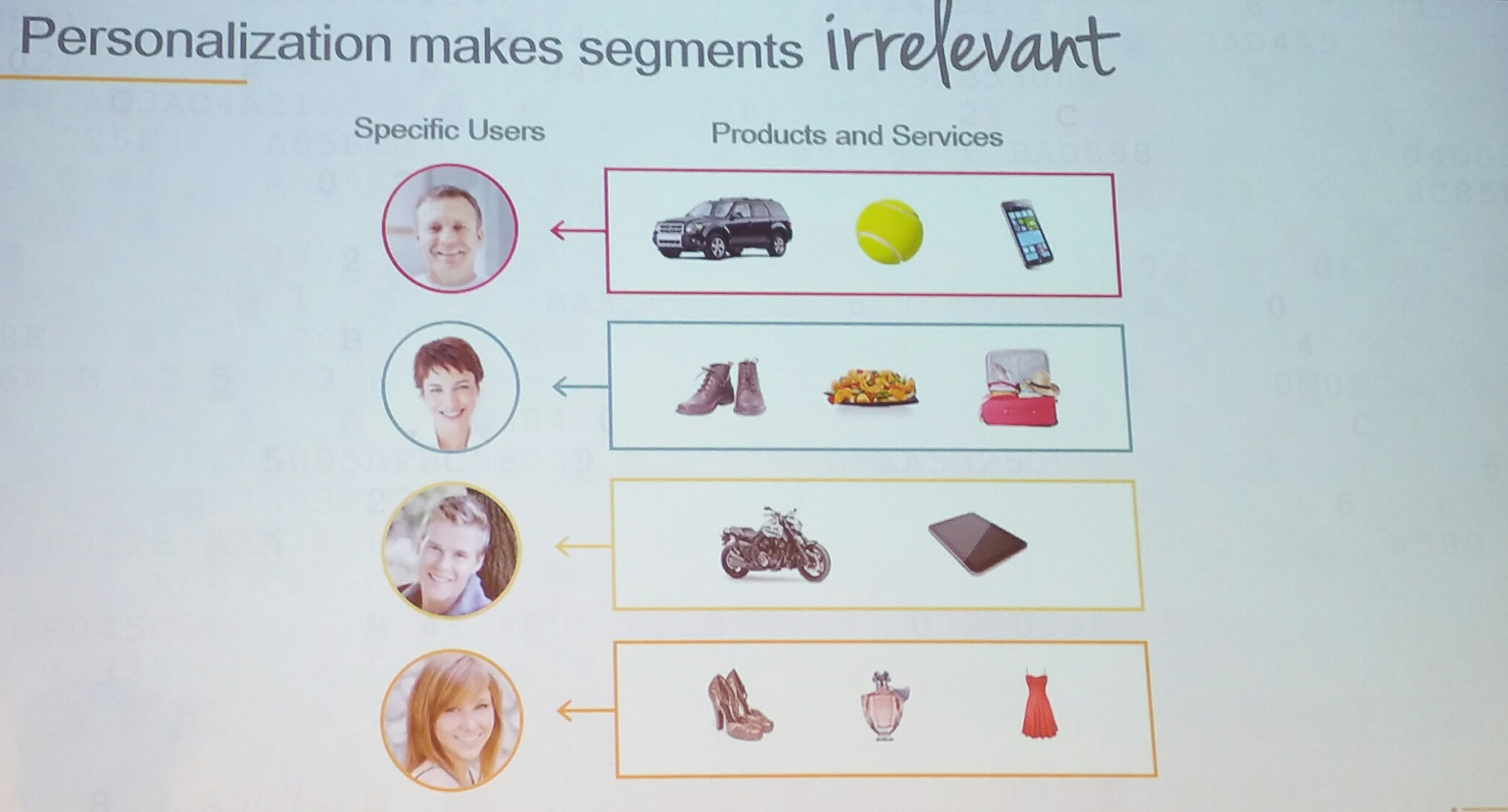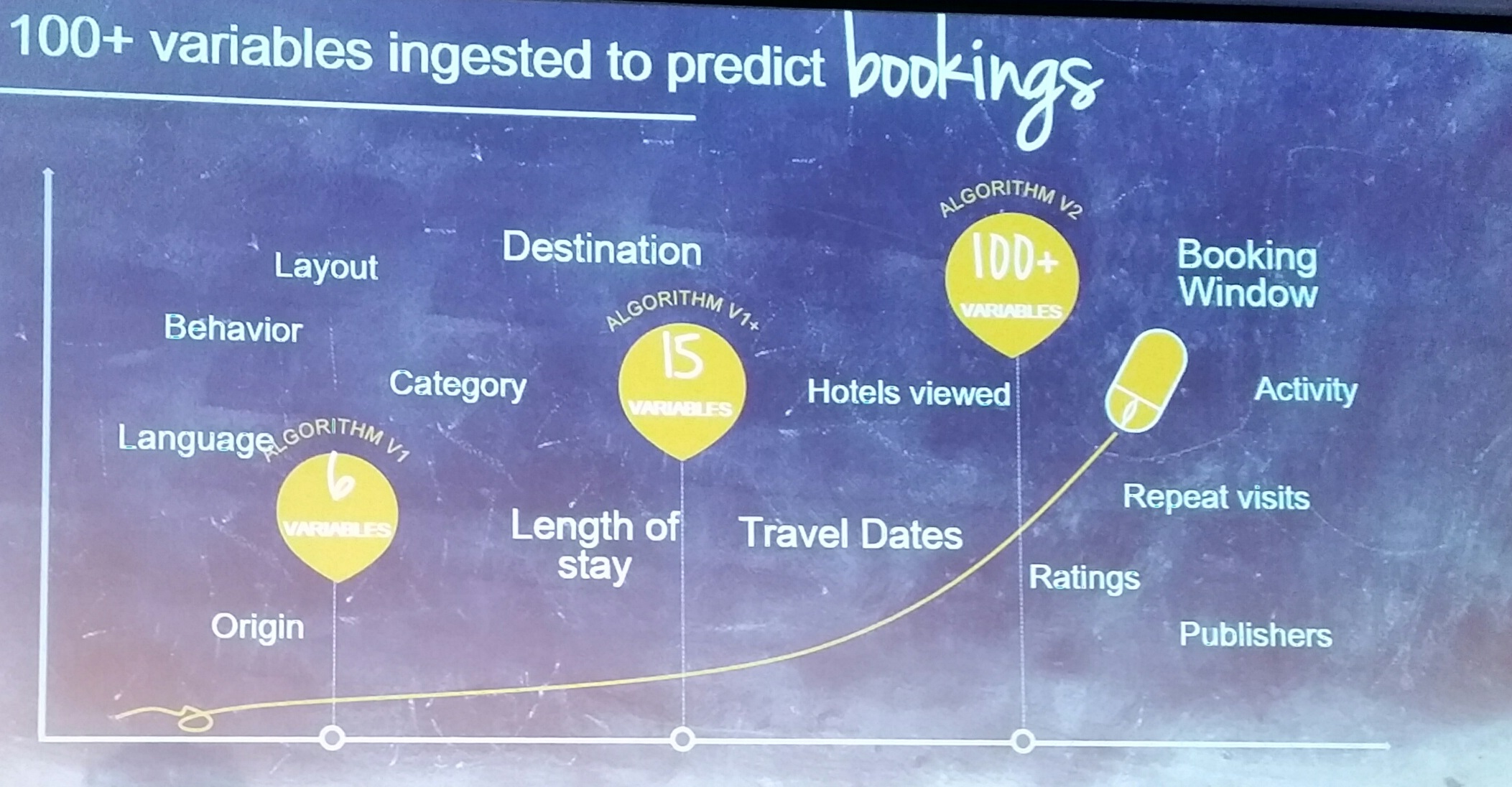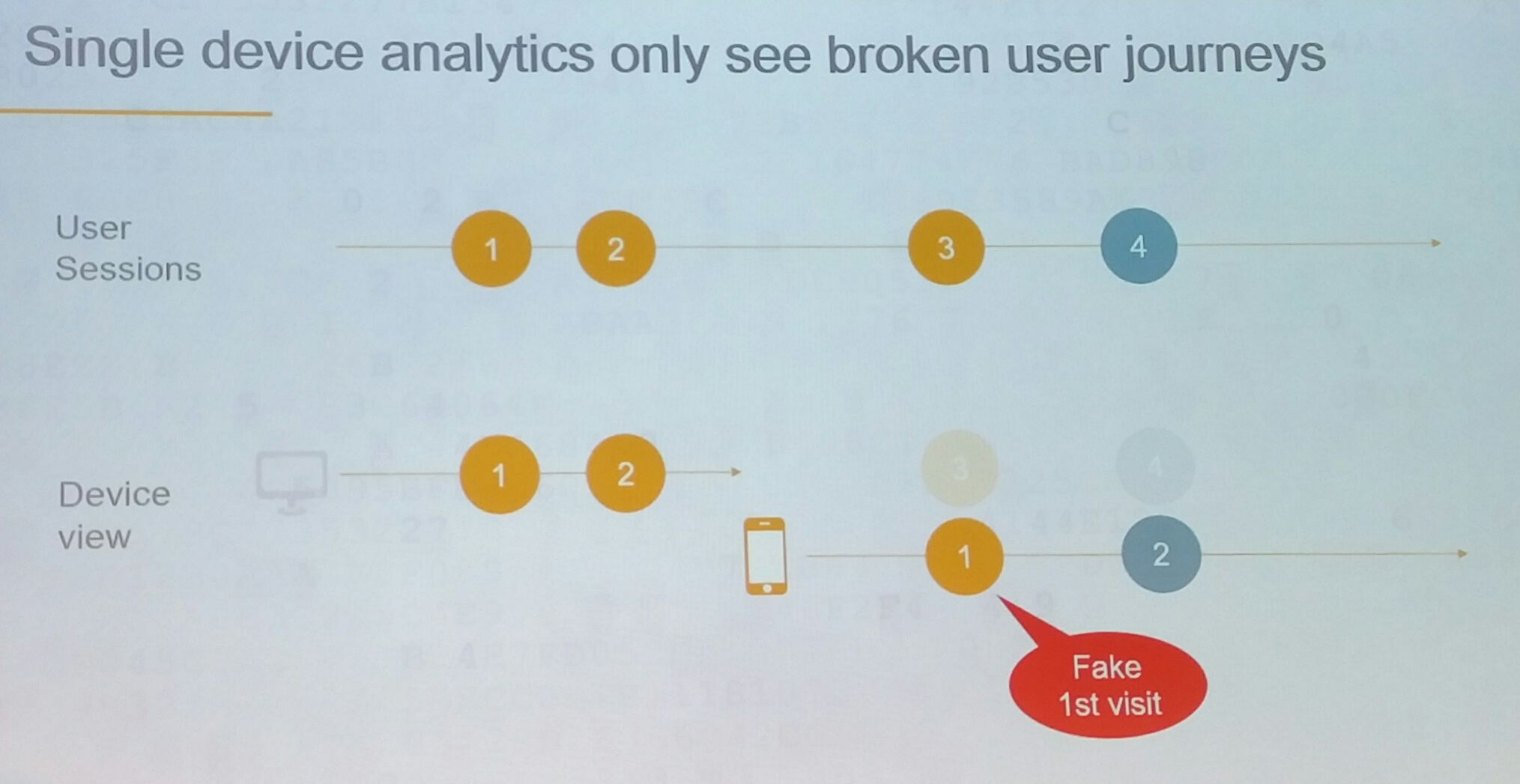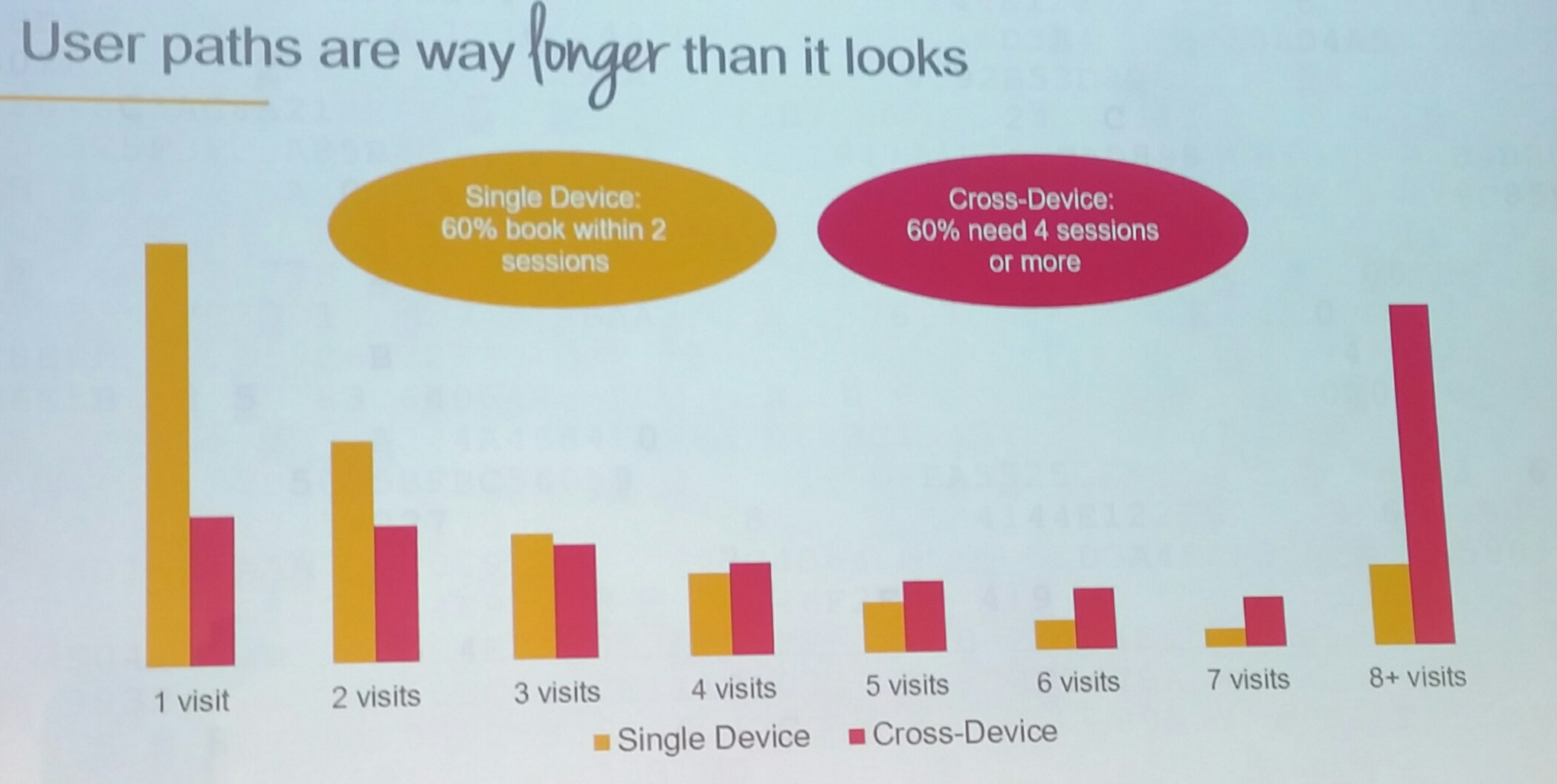Phocuswright Europe Workshops – A Data Driven Guide to People Centric Marketing
The world is in the midst of a data explosion. Over time, general computer use has moved from a single, shared computer towards multiple personal devices and the internet of things. As a result, there is an information overload happening in data terms for marketers, and also in content and information terms for consumers. So how do marketers harness this data to stand out in a crowded online space? Daniele Beccari from Criteo discussed this at the recent Phocuswright Europe conference.
Relevance
The key to getting attention in a crowded online marketplace is relevance. Relevance is achievable through:
- Segmentation
- Personalization
- Contextualisation
Segmentation is a good first basic step, however the dawn of the age of personalization makes segmentation virtually redundant.

Data then assists with providing relevant information in the right context. Data is particularly powerful when it is used to predict what the user needs ‘right now’.
User-Centric Marketing
Data for travel clients requires the analysis of over 100 variables to predict bookings. This data can then help with identifying the right time to invest in advertising during the travel lifecycle.

In order to engage in user-centric marketing, there are certain fundamental requirements for effective personalization:
- Privacy – this is becoming more important as privacy laws tighten up, particularly in Europe.
- Data Analytics – accurate data to drive decision making is key.
- Dynamic creative – dynamic creative ads that can be adapted to what the user needs right now
- Reach – INBOUND more data to better understand user intent.
Reach – OUTBOUND multiple platforms to reach customers at different touch points.
Reach also refers to cross platform reach (mobile, desktop, tablet)
Cross Device Use
The number of people transacting on mobile devices increased by 26% in Q1 of 2016, the rise in this stat for accommodation products was +35%. Smartphones are typically used for last minute bookings, however hotel brands are falling behind OTA’s in the mobile battleground.
Analytics + Cross Device Use
The problem with data analytics is that they are all device centric. In reality most people use multiple devices to make a booking decision.
Cross device use is biasing your analytics data if you are not using software that can track across devices.

TIP: When looking at your own data analytics, if the average number of sessions to make a booking is high, then cross device use is likely an issue for you; your data is probably inaccurate.
The fact is, that for travel bookings user paths are longer than they appear. Based on the data, longer decision cycles use more touch points. When using single device tracking it appears that 60% of bookings happen within 2 sessions, however when cross device tracking is enabled, we learn that in fact 60% of bookings require 4 sessions or more.

Conclusion
There are two major trends from the data. The first is the increased opportunity to target bookers with user-centric marketing, providing the relevant information in the right context. The second: cross device usage is huge, regardless of what device is finally used for booking.
The Solution
Test multiple analytics models and vendors to understand the user path of bookers.
Want to discover more about travel industry trends? Find out more about upcoming Phocuswright events.
All images used are copyright of Criteo.
